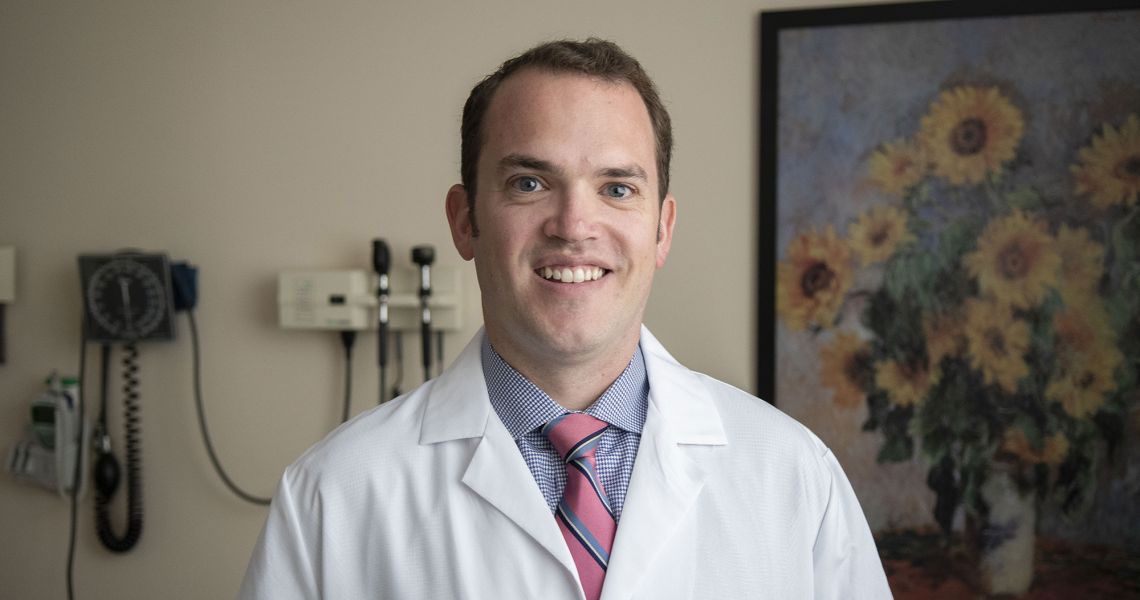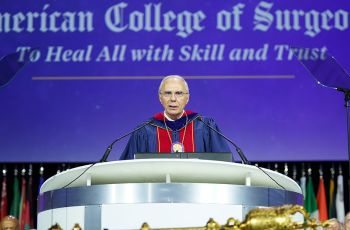Icy patches can lurk under slush or on dark pavement, leading to slips and falls, the most common accidents during winter months. Often accompanying these slick spots is snow, which comes with its own set of aches and pains, especially for those who regularly have to shovel paths or clean off windshields. Here, Zachary Zimmer, MD, assistant professor of orthopaedic surgery at the George Washington University (GW) Medical Faculty Associates, explains how you can avoid strained backs and sprained wrists and when you should seek help for more serious injuries.
What are the most common injuries you see in winter, especially during snowy or icy weather?
Zimmer: During the winter, injuries range from muscle strains from shoveling snow to fractures due to slips and falls on ice. Muscle strains can occur from other activities as well, such as lifting other heavy objects. Winter sports, including skiing and ice skating, can also result in injuries.
As a shoulder surgeon, I often see injuries of the shoulder from patients who had a fall while skiing, sometimes resulting in fractures of bones around the shoulder. Unfortunately, slips and falls on ice are also very common. This can result in many injuries, including fractures of the wrist if one falls on an outstretched hand or ankle fractures if the ankle is twisted during the fall.
How can you treat these injuries?
Zimmer: Most injuries can be treated with ice, rest, and anti-inflammatories [such as aspirin and ibuprofen]. If the pain seems to be more of a muscle ache or strain, heating pads may help. Often, these injuries improve over time and do not require medical treatment.
At what point should people seek care from a doctor?
Zimmer: Injuries that result in severe pain, deformity of a joint or extremity, or an inability to walk require more urgent medical attention. In addition, injuries that persist for more than a few weeks without improvement should be evaluated by a physician.
What can people do to prevent injuries?
Zimmer: There are many ways to prevent injuries during the winter months. Make sure to be aware of ice on the ground, particularly black ice, which can be difficult to see, especially at night. Slips and falls during the winter are a very common cause of ankle and wrist fractures. When shoveling snow, be sure to limit the amount of snow being lifted each time to avoid injury to your arms, shoulders, and back. Using your legs to lift snow can also help you avoid straining your back.
How does the GW MFA care for patients who have been injured during the winter months?
Zimmer: At the MFA, the Department of Orthopaedic Surgery sees many patients with injuries related to the weather. If the injury is relatively minor, we may recommend some rest, anti-inflammatory medications, and possibly physical therapy. If the injury is more severe, such as a fracture, the treatment may consist of immobilization in a splint or cast and avoiding putting weight on the extremity. Other fractures may require surgery to ensure the best possible outcome for the patient.
To make an appointment with an orthopaedic surgeon, visit the GW MFA Department of Orthopaedic Surgery or call 202-741-3300.




